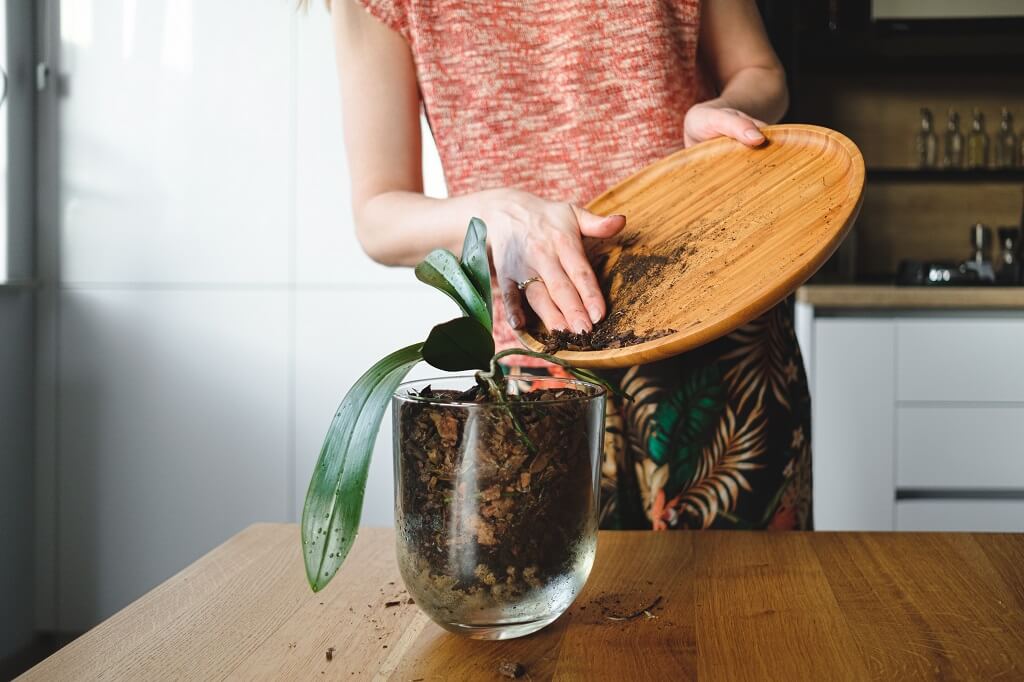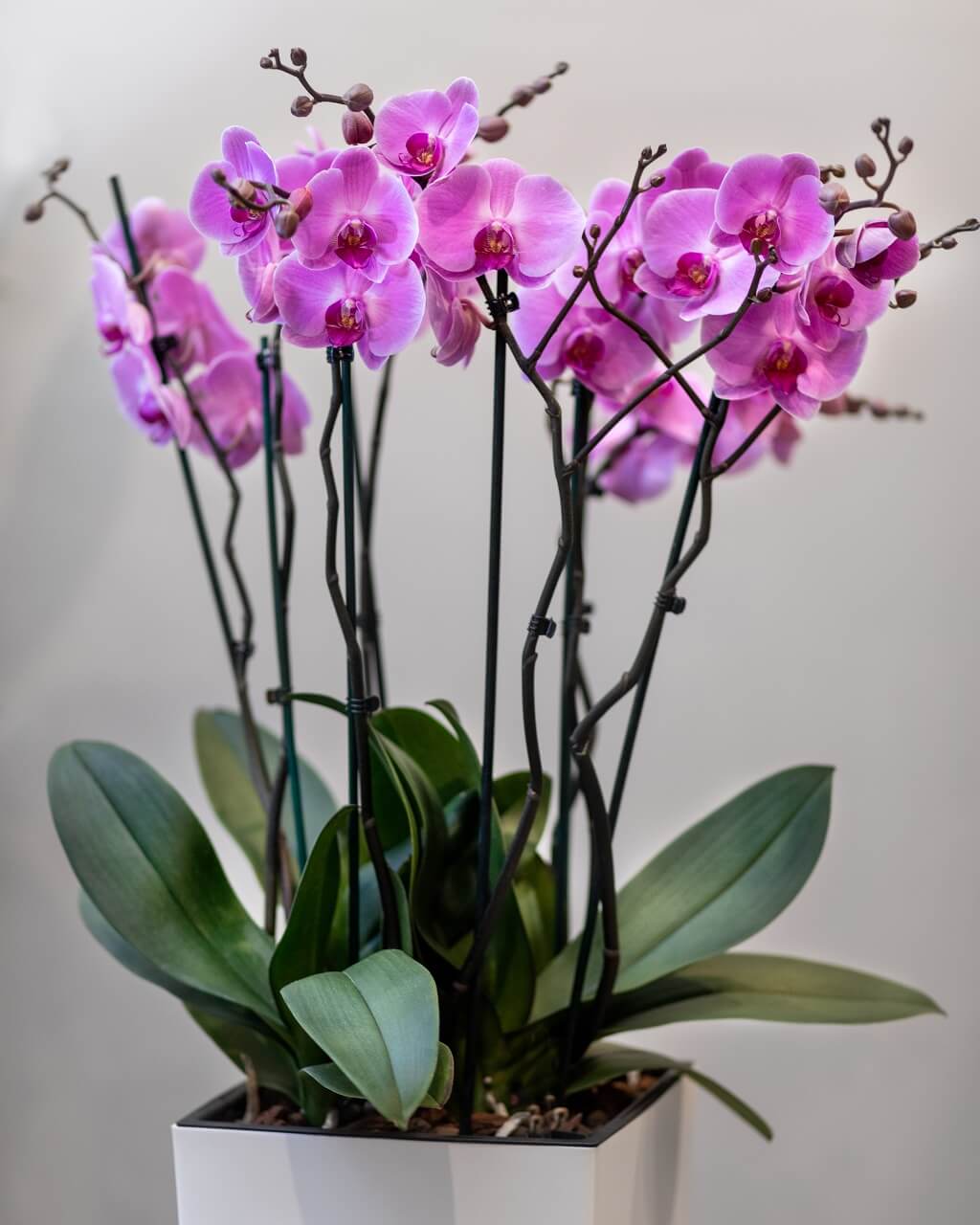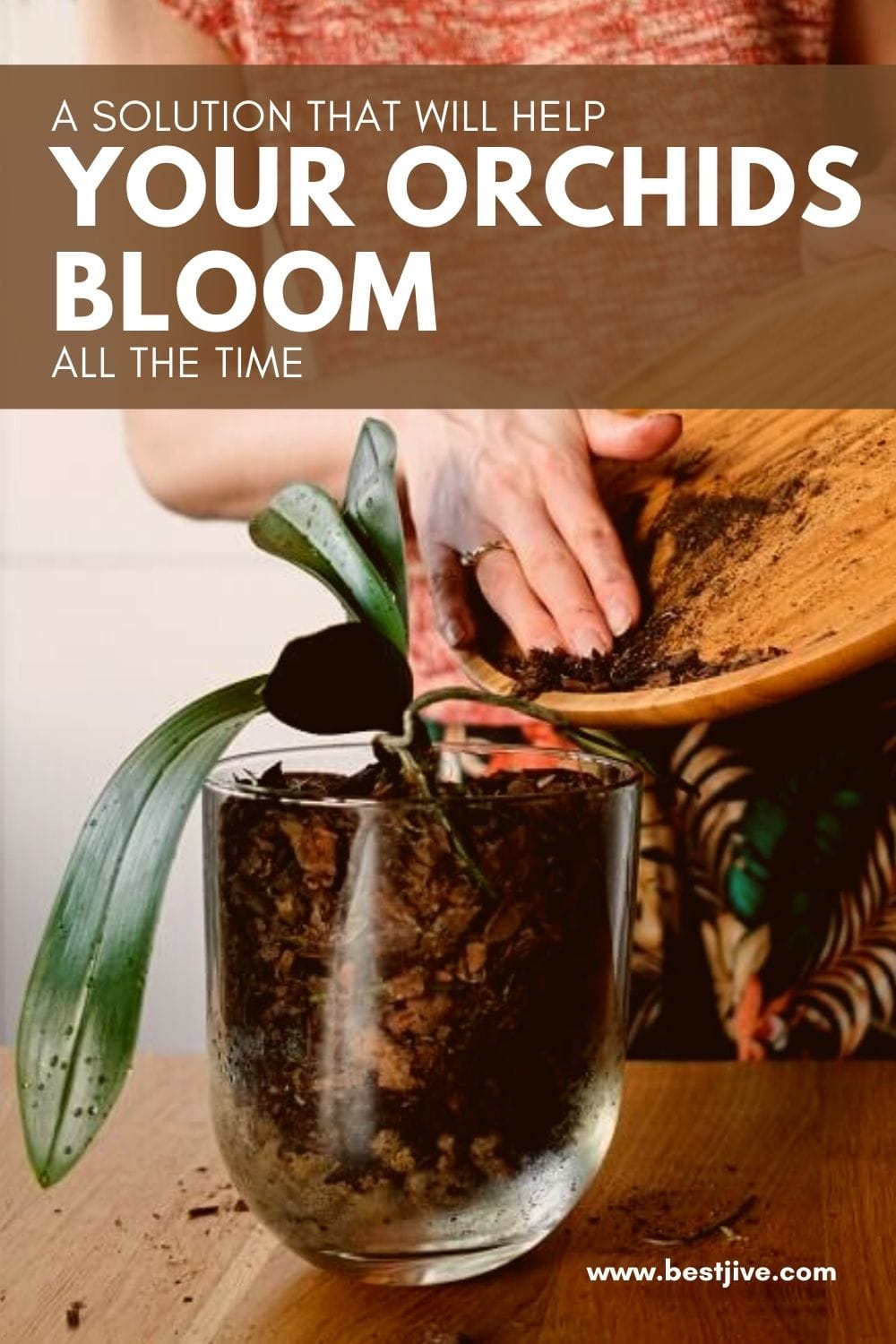Orchids are very sensitive plants, and they can die if not taken care of properly. Below, you can learn several ideas about how to help your orchids bloom and stay completely healthy.
Propagating an orchid
After it begins to grow buds, don’t move the plant into a new pot. An orchid should be moved to another pot once every 2–3 years, when the soil depletes. Watch your orchids closely; if they don’t look completely healthy, change the soil.

The appropriate soil for orchids
In nature, orchids grow on tree trunks and they don’t need soil, as they receive all necessary nutrients from the rain water. However, indoor orchids need soil so they can stay vertical.
READ THIS: How often should orchids be watered? Correct watering will make orchids bloom faster
The appropriate pot for orchids
Orchids will feel wonderful if you use transparent pots that drain well and are suitable for the size of the plant.

Transplanting an orchid
Prepare a dish filled with lukewarm water previously boiled, a transparent pot, scissors, fresh soil, a piece of polyurethane and Brilliant Green.
Submerge the orchid still in the pot into the dish of water. Remove the plant carefully from the pot and then dip again in the water. Wash off all the soil from the roots.
Disinfect the scissors and cut off rotten or dry roots. Spread Brilliant Green on every single root. Place some soil at the bottom of the pot and then place in the orchid and several pieces of polyurethane around the roots. Fill the pot with soil to the top. Don’t water the plant for 7–10 days after replanting.

How to make an orchid bloom
Some orchid growers use a simple trick to make orchids bloom: they keep them in a dark place for several days, and then put them in a brightly lit area. This trick, however, works only in case of healthy orchids and may kill sick plants.
Use keiki paste to stimulate blooming. Spread a small quantity on lazy buds, and you will see them bloom within two weeks. Keiki paste is a unique product that helps growing new orchids without causing trauma to the mother plant.



